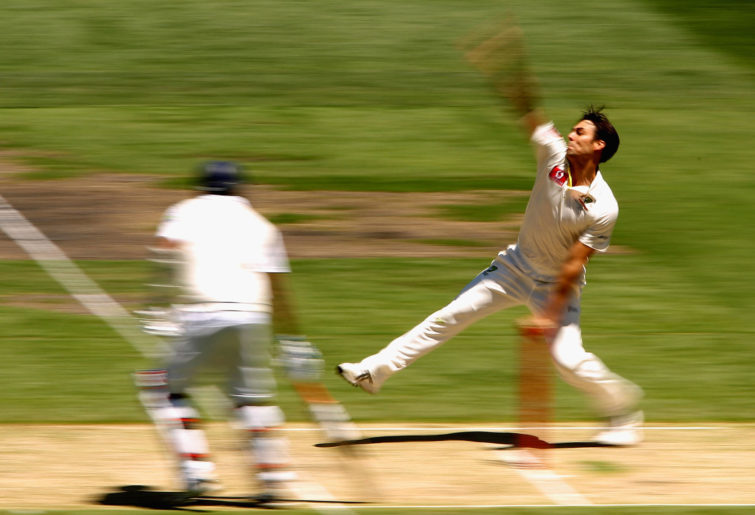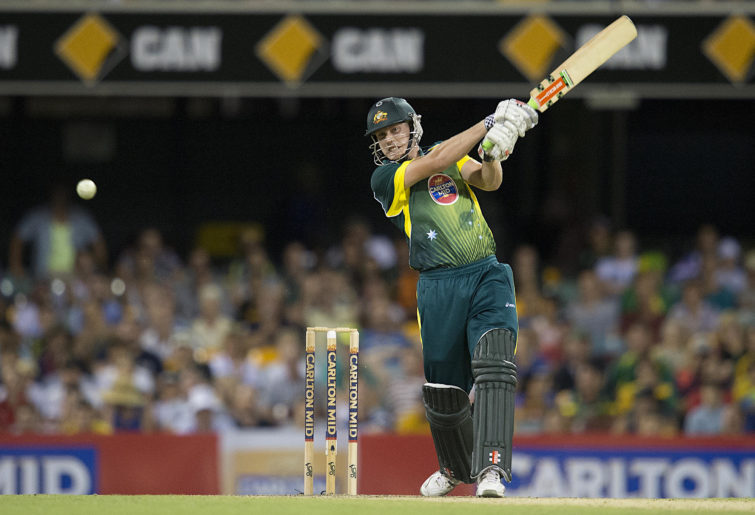World Cup chances up in the air but Smith makes Major call on T20 future, Green dumped despite huge IPL deal
Test great Steve Smith is to play for Washington Freedom in the second season of Major League Cricket as the Australian influence in the…

There have been two Ashes whitewashes in recent years. The first, in the summer of 2006-07 made sense. A champion Australian team were hell-bent on revenge against an England team that had stolen the urn from them in one of the great series of all time.
The second whitewash, the one from the summer of 2013-14, remains almost completely unfathomable. The 2013-14 Australian side wasn’t one of the greatest teams in history.
But they did have Mitchell Johnson, who, for one mad summer, found a consistency1 of form that had previously eluded him. Johnson had a mo that made him look like a blend of a terrifying Hell’s Angels biker and Freddie Mercury. He also had an M.O. that consisted of a blend of terrifying short-pitched bowling and mercurial stumps-shattering yorkers. Both proved too much for any England batsman to handle.

(Photo by Robert Prezioso/Getty Images)
Johnson was supported primarily by Ryan Harris, a bowler whose knees were held together by sticky-tape and paper clips, and wicketkeeper Brad Haddin, who spent the entire Test series coming in at five wickets down for not many and only departing once Australia had reached a total of more than enough.
Those three played all five Tests — but so did the other eight members of the team – as Australia put an exclamation mark on their authority by sticking to the same side for each match. In contrast, England changed their side after every game. They used a total of 18 players over the five Tests2, until in the final Test they were giving random grade cricketers their debut3.
After the 5-0 defeat in the Tests, England made an effort to start afresh in the limited-overs matches; a new form of the game, with new players wearing a novel, bright red, playing strip. It was a perfect opportunity to regain their footing and salvage something from a misbegotten tour.
They stumbled in the first one-day international at the MCG but the second game at Brisbane saw the reborn England wrestle the ascendancy away from Australia.
Batting first after Alastair Cook won the toss, England made 8/300 from their 50 overs. Eoin Morgan, who was caught off a no-ball when Australia had too many fielders outside the circle, was the standout England batsman, making 106 from just 99 balls.
In reply, Australia lost steady wickets and fell steadily behind the run-rate required. When Nathan Coulter-Nile, promoted in the batting order to exploit the outfield gaps during the ‘Power Play’ rules of the day, was trapped lbw by Ben Stokes for 16 runs off 23 balls, Australia were 8/235 off 41 overs.
That’s when James Faulkner came to the crease, batting at nine for the only time in his career.
Faulkner had been the 12th man throughout the Test summer. If being on the sidelines during an Ashes whitewash had left him somewhat frustrated, this was the perfect chance to exorcise those frustrations.
He’d already taken two wickets earlier in the day, but Australia now needed him with the bat, especially when Johnson fell three overs later to make the score 9/244. Australia needed 57 runs to win from six overs, with one wicket in hand.
Faulkner later admitted to being “pretty nervous” about the situation, which was both a) the correct way to feel and b) not at all evident in how he batted.

(AAP Image/Dave Hunt)
He eschewed multiple opportunities for singles, preferring instead to keep the strike for himself. With the strike, he would then club enormous 100m-plus sixes into the crowd4. This was widely considered a solid strategy.
With three overs left, Australian still needed 30 runs to win. Faulkner, on 39, had just been caught in the outfield by a slide-diving Joe Root who’d slid-dove over the rope to transform a match-winning catch to a marginally match-simplifying six.
With Tim Bresnan bowling slower balls, Faulkner defended the first couple before stealing a pair of twos and a single to keep the strike. Twenty-five runs to win off two overs became 25 off ten balls when the first two balls of the over were dotted out.
Faulkner decided to finish it. He channelled the Jessie J, Ariana Grande and Nicki Minaj 2014 hit song ‘Bang Bang’, as he ‘B to the A to the N to the G’ed two sixes into the crowd, then kept the strike with a last-ball single. The target was now 12 from the last six balls, which he reached with a trio of consecutive boundaries off the hapless Bresnan.
When Faulkner hit the third four of the final over to win the match with three balls to spare, his ecstatic teammates stormed the field to hug him. Michael Clarke, the Australian captain, gave his match-winning all-rounder the highest possible praise available for an Australian white-ball batsman, dubbing Faulkner “the new Michael Bevan”.
Faulkner’s finishing rammed home the futility of England’s 2013-14 tour of Australia. It had begun in Brisbane — the ‘Gabbatoir’ — with a Mitchell Johnson blitz with the ball. It ended back where it began — another Brisbane blitz, this time by Faulkner with the bat. There were still three ODIs and three T20s to come in the summer, but the faces of all the England players told the story. They were done.
Of course, students of Ashes history will recall that England did win a game that tour. A lone ODI in Perth a couple of games later. But, if anything, that highlighted further their comical ineptitude. They couldn’t even successfully implement a uniformly hopeless tour.
Result: Australia won by one wicket with three balls remaining
This is an extract from Dan Liebke’s latest book, The 50 Greatest Matches In Australian Cricket, out now in bookstores and online.
1 Good consistency, that is. He’d sometimes previously strung together periods of awfulness. Back to article.
2 An ECB post-mortem of the tour would later reveal it was all Kevin Pietersen’s fault. Which was excellent news for the other seventeen players. Back to article.
3 Not a joke. Scott Borthwick was summoned into the squad from the Northern District club in Sydney’s grade competition when Graeme Swann retired mid-tour. Back to article.
4 These sixes would invariably be from the bowling of Stokes. Hitting Ben Stokes for sixes to snatch an impossible victory would be a tactic later employed by Carlos Brathwaite in a famous World T20 victory that, because it carelessly didn’t feature Australia, doesn’t qualify for this book. Back to article.